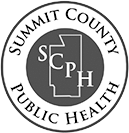The following are recommendations for ensuring your food is safe following a disaster:
Milk
- Milk in any type of container must be discarded, except milk in sealed cans. Before using canned milk, write the contents on the lid with a waterproof marker, remove the label, wash the cans thoroughly in hot, soapy water, rinse, then submerge in a chlorine solution* for five minutes.
Canned Goods
- Check all canned goods thoroughly and discard all bulging, dented, or leaking cans. Do not take a chance on dented cans even if the dent is small and the can does not appear to be leaking; a germ can get into a hole too small for liquids to leak out. When in doubt, throw it out!
- Discard all food items that are not in solid, sealed cans such as items with caps on them (for example, soft drinks, ketchup, mustard etc.).
- Check closely all home canned goods and discard all with bulging tops or ones that are leaking.
- Before using any food items in solid, sealed cans, write the contents on the lid with a water proof marker, remove all paper labeling, wash the cans in hot, soapy water, rinse, then submerge them in a chlorine solution for five minutes.
- CHLORINE SOLUTION: Use liquid unscented laundry bleach with sodium hypochlorite of 5.25% (look for the percentage on the label). Use ¾ cup of bleach in 1 gallon of cold water. Do not use hot water or the chlorine will be destroyed. Mix the solution thoroughly.
Frozen Food
- If the home freezer has been covered with floodwaters, the food within has probably been damaged by seepage. The foods should be discarded.
- If the electricity has been cut off and no floodwater has entered the freezer, the amount of food in the box will determine keeping qualities. A fairly full box will come through a 2-3 day period without much loss of quality and flavor. It is very important to keep the freezer lid closed during power loss. If you have a thermometer in your freezer and the temperature is above 41 degrees after the power has been out for an extended period, items in the freezer should be discarded.
- Partially thawed meat can be refrozen without much loss in quality. Completely thawed meat can be cooked and refrozen. If freezer temperature has gone above 41 degrees for an extended period of time, food should be discarded. When in doubt, throw it out!
- Fish, shellfish (clams, oysters, etc.), and frozen cooked goods should be discarded.
- The flavor and texture of vegetables and fruits are impaired upon thawing and refreezing; you may as well discard these items.
- Solid frozen foods are safe unless exposed to flood waters.
Find additional resources to help you prepare for an emergency:
